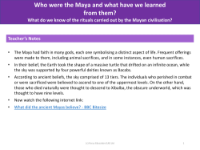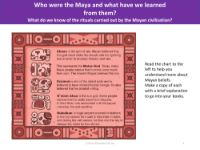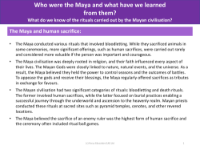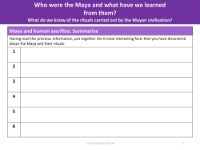What do we know of the rituals carried out by the Mayan civilisation? - Presentation
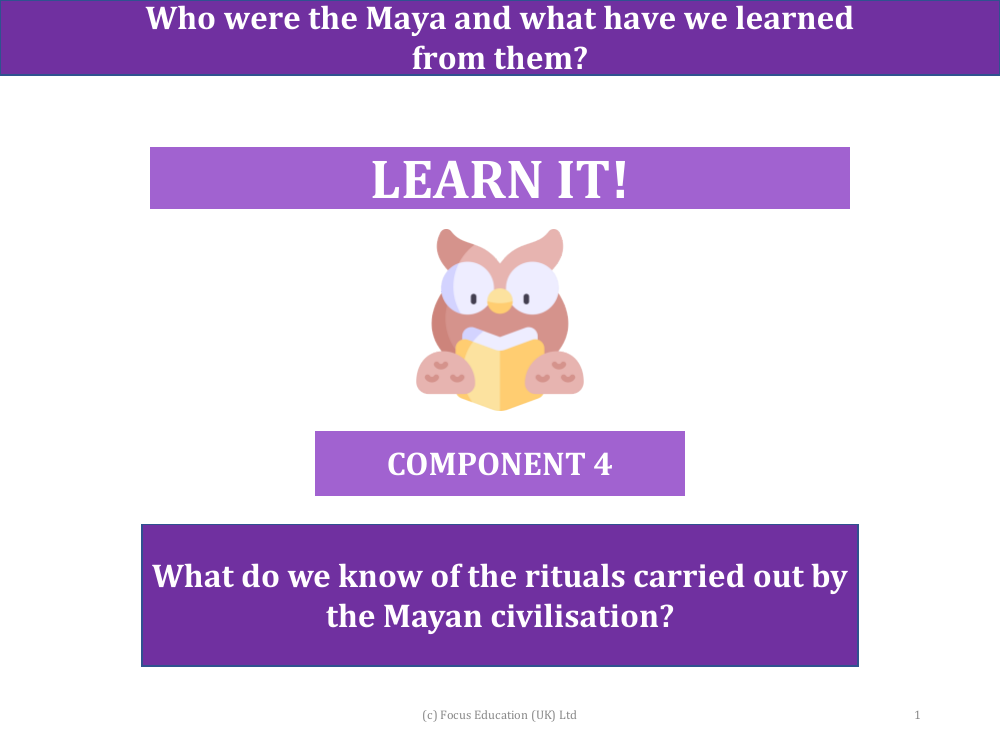
History Resource Description
The Mayan civilisation, known for its deep-rooted religious beliefs, practiced a variety of rituals to honour their pantheon of gods, each representing different facets of life. These rituals were an integral part of Mayan culture and included frequent offerings such as animal sacrifices, and on rarer, more significant occasions, human sacrifices. The Mayans held the view that the Earth was shaped like a vast turtle floating on an endless sea, with the heavens above supported by four mighty deities called Bacabs. Their cosmology was intricate, with a thirteen-tiered sky and a nine-leveled underworld named Xibalba. Warriors who died in battle or those sacrificed were believed to ascend to the higher levels of the sky, while those who passed away from natural causes were thought to descend into the dark recesses of Xibalba.
The ritualistic practices of the Maya were diverse, including bloodletting and death rituals. Bloodletting often involved human sacrifices, which, although infrequent, were deemed more precious when the individuals were of high status and bravery. The Maya's religious practices permeated every aspect of their daily lives, with their gods associated with nature, celestial phenomena, and the cosmos. Believing that they could influence seasons and battle outcomes, the Maya sought to appease their gods through sacrifices in hope of gaining their favour. Rituals were conducted by Mayan priests at sacred sites, including pyramid temples and cenotes, with the sacrifice of an enemy ruler considered the most supreme form of offering. These ceremonies sometimes featured ritual ball games, which had their own symbolic importance within Mayan society.


